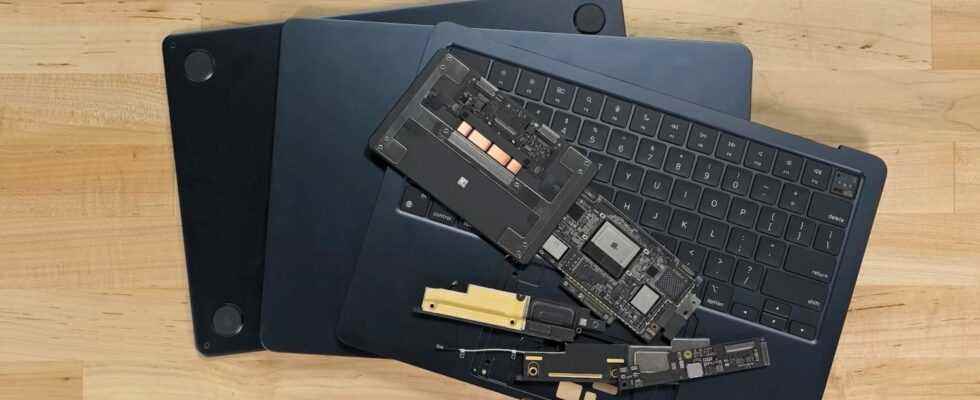The last Macbook Air M2 has passed through the expert hands of the site and delivers all its design secrets.
The MacBook Air M2 has been available since Friday July 15 and iFixit technicians were able to get their hands on a copy to reveal its innards.
A compact motherboard and huge battery form the heart of the MacBook Air M2
First change compared to the previous MacBook Air: its lower cover is much easier to remove with only four screws compared to 10 on the 2020 model. This modification should allow easier repair for Apple teams in charge of after-sales service.
Once the case is removed, you quickly realize that the various components are protected and hidden, but their disconnection remains easy with a few suitable tools. The motherboard is notably hidden under a metal plate and the components are soldered to it to avoid replacement by technicians not approved by Apple.
The 52.6 Wh battery, which takes up most of the volume of the device, is glued to the case.
The motherboard of the MacBook Air M2 is extremely compact, thanks in particular to the adoption of the Apple Silicon M2 chip but also to the absence of a ventilation system to cool the device in the event of intensive use. We can also discuss this choice while some first returns point to excessive heating of their device.
A slower SSD and an integrated accelerometer
Among the other developments made by Apple, the speakers have changed places. Formerly placed on the left and right of the device, they are now positioned above the keyboard, between the case and the screen.
The MacBook Air M2 also has an accelerometer that detects the movements of the device. iFixit is not able to say what this component usually found in smartphones or tablets is used for, and suggests that it could be used by Apple technical teams to determine if the computer has suffered an accidental fall before to pass through their hands.
Finally, the SSD is only composed of a single NAND chip against two chips for the latest 13-inch MacBook Pros, which explains the slower transfer speeds observed since the release of the device.
Source : 9to5Mac

8